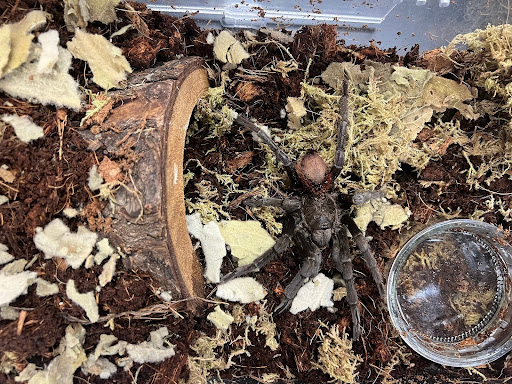CRISPR is a special gene-editing technology that allows scientists to modify, delete, or insert new DNA sequences into an organism.
CRISPR works like this: Restriction enzymes are like tiny scissors or box-cutters that cut certain sites that they recognise. These enzymes are an important part of the natural defense system that bacteria have. CRISPR uses a special kind of nuclease called “Cas-9” to cut away unwanted sequences in DNA. Furthermore, Scientists can now engineer special guide RNA in the lab. Using this specific guide RNA, the Cas-9 protein can be guided to cut around a specific target gene, and if desired, it can later be replaced with a new one.
Through this process, CRISPR is currently revolutionizing the world of medicine.
For example, Mrs. Erica Shannon, an AP Biology teacher at Elkhart High School, explains: “By identifying potential inheritance (those that might carry a defective gene) we could go in and edit that gene to prevent certain diseases and mutations like sickle cell anemia that is a one base change.” She further articulates that by doing this, scientists can treat sickle cell by helping people “produce normal levels of hemoglobin.”
In fact, on Dec. 8, the FDA approved the first CRISPR treatment for sickle cell disease. The treatment is called exa-cel, and it is made by both Vertex and CRISPR Therapeutics. With exa-cel, CRISPR is used to edit genes involved in red blood cell shape and function. Currently, the treatment is expected to cure sickle cell disease for at least a year (Reardon).
This major step is extremely exciting because CRISPR has so many other potential uses. It could help recode cancer-causing genes, restore proper insulin levels in patients with Diabetes, and more.
Nevertheless, Shannon notes, “There is a consensus with scientists that we just don’t know enough about the function of each of the molecules produced by DNA, and sometimes we don’t even know what the strand is actually producing. We haven’t identified all of the molecules that are actually produced. So,” she concludes, “if we start making changes now, I think that there’s just going to be problems in the long run until we know more about the functions of the molecules produced.”
Still, this recent development in sickle cell treatment is a huge leap forward for scientists and medical professionals all over the world, and as researchers continue to learn more about this amazing technology, there can only be more good to come.





















